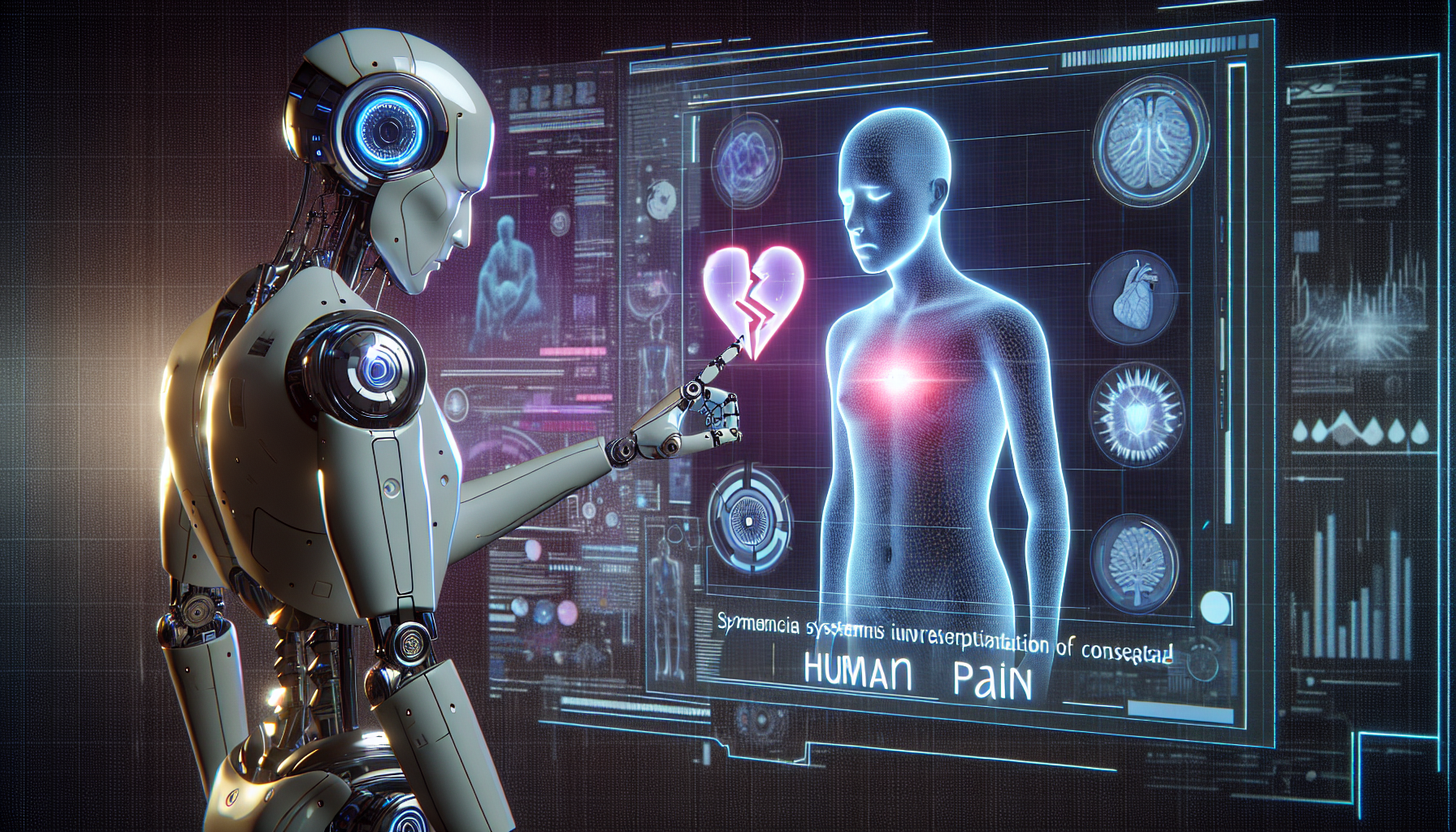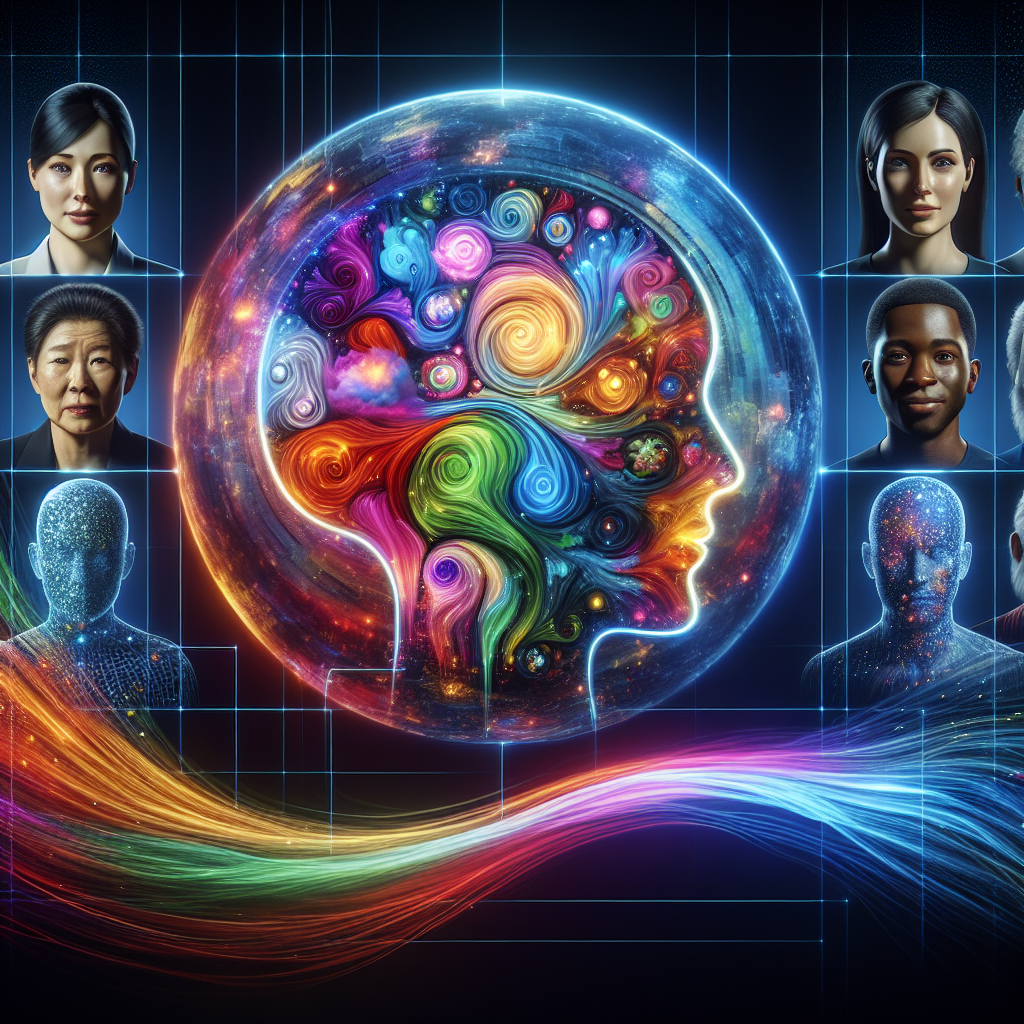Digital Empathy: Can Artificial Intelligence Truly Understand Human Pain?
In an era where artificial intelligence (AI) is increasingly integrated into various facets of daily life, the concept of digital empathy has emerged as a pivotal area of exploration. As AI systems become more sophisticated, their potential to understand and respond to human emotions, particularly pain, is both a technological challenge and an ethical conundrum. Digital empathy refers to the ability of AI to recognize, interpret, and respond to human emotions in a manner that mimics genuine human empathy. However, the question remains: can AI truly comprehend the depth and complexity of human pain, or is it merely simulating an understanding based on data-driven algorithms? This inquiry delves into the capabilities and limitations of AI in replicating human empathy, examining the technological advancements that enable machines to process emotional cues and the philosophical implications of entrusting machines with the nuances of human suffering. As we navigate this intersection of technology and emotion, the quest to determine whether AI can authentically understand human pain continues to provoke debate among technologists, ethicists, and psychologists alike.
Exploring The Limits Of AI: Can Machines Truly Grasp Human Emotions?
In the rapidly evolving landscape of artificial intelligence, one of the most intriguing questions is whether machines can truly grasp human emotions, particularly the complex spectrum of human pain. As AI systems become increasingly sophisticated, their ability to simulate empathy and respond to emotional cues has improved significantly. However, the question remains: can these systems genuinely understand the depth and nuance of human suffering, or are they merely mimicking responses based on pre-programmed algorithms?
To explore this question, it is essential to first consider the nature of empathy itself. Empathy involves not only recognizing and understanding another’s emotional state but also sharing and responding to it in a meaningful way. Human empathy is deeply rooted in our biological and psychological makeup, influenced by personal experiences, cultural contexts, and social interactions. This intricate web of factors makes human emotions particularly challenging for machines to fully comprehend.
Artificial intelligence, at its core, operates on data-driven algorithms. These algorithms can be trained to recognize patterns in human behavior and language, allowing AI systems to identify emotional cues such as tone of voice, facial expressions, and word choice. For instance, sentiment analysis tools can assess the emotional content of text, while advanced AI models can generate empathetic responses in customer service applications. Despite these advancements, the fundamental limitation lies in the fact that AI lacks consciousness and subjective experience. It processes information without the intrinsic understanding that comes from being a sentient being.
Moreover, the complexity of human pain extends beyond mere recognition. Pain is not only a physical sensation but also an emotional and psychological experience that can be influenced by a myriad of factors, including past trauma, mental health, and social environment. While AI can be programmed to recognize indicators of distress, it cannot truly feel or internalize these experiences. This limitation raises ethical concerns about the deployment of AI in sensitive areas such as mental health support, where genuine empathy and understanding are crucial.
Nevertheless, the potential benefits of AI in this domain should not be overlooked. AI systems can offer valuable support by providing consistent, non-judgmental interactions and identifying patterns that may be indicative of emotional distress. For example, AI-driven chatbots can offer immediate assistance and resources to individuals in crisis, potentially bridging gaps in mental health care accessibility. Furthermore, AI can assist healthcare professionals by analyzing large datasets to identify trends and correlations that may inform treatment strategies.
As we continue to explore the limits of AI’s capacity to understand human emotions, it is crucial to approach this technology with both optimism and caution. While AI can enhance our ability to address emotional and psychological needs, it should not replace the human touch that is often essential in these interactions. The development of AI systems that can effectively simulate empathy should be guided by ethical considerations, ensuring that these tools are used to complement, rather than supplant, human empathy.
In conclusion, while artificial intelligence has made significant strides in recognizing and responding to human emotions, it remains fundamentally limited in its ability to truly understand human pain. The absence of consciousness and subjective experience means that AI can only approximate empathy through data-driven algorithms. As we continue to integrate AI into various aspects of our lives, it is imperative to recognize these limitations and ensure that the human element remains at the forefront of emotional and psychological support.
The Role Of Digital Empathy In AI: Bridging The Gap Between Technology And Human Experience
In the rapidly evolving landscape of artificial intelligence, the concept of digital empathy has emerged as a pivotal area of exploration. As AI systems become increasingly integrated into various aspects of daily life, the question arises: can these systems truly understand and respond to human emotions, particularly pain? This inquiry delves into the heart of digital empathy, a field that seeks to bridge the gap between technology and human experience by imbuing machines with the ability to recognize, interpret, and respond to emotional cues.
At its core, digital empathy involves the development of AI systems that can simulate an understanding of human emotions. This is achieved through sophisticated algorithms that analyze data from various sources, such as facial expressions, voice intonations, and even physiological signals. By processing this information, AI can make inferences about a person’s emotional state, potentially allowing for more nuanced and sensitive interactions. However, the challenge lies in the fact that empathy is not merely about recognizing emotions; it also involves a deep, often intuitive understanding of the context and nuances that accompany human experiences.
To address this challenge, researchers are exploring ways to enhance AI’s ability to comprehend the complexities of human emotions. One approach involves training AI models on diverse datasets that encompass a wide range of emotional expressions and scenarios. By exposing AI to varied emotional contexts, developers aim to create systems that can better generalize and adapt to new situations. Moreover, advancements in natural language processing have enabled AI to engage in more meaningful conversations, allowing for a deeper exploration of emotional states through dialogue.
Despite these advancements, the question remains whether AI can truly understand human pain in the same way a human does. Empathy, in its truest form, is a deeply personal and subjective experience, often shaped by individual histories and cultural backgrounds. While AI can be programmed to recognize patterns and respond accordingly, it lacks the lived experiences that inform human empathy. This limitation raises ethical considerations, particularly in fields such as healthcare, where empathetic interactions are crucial. For instance, while AI can assist in diagnosing mental health conditions by analyzing speech patterns or facial expressions, it may not fully grasp the intricacies of a patient’s emotional journey.
Nevertheless, the potential benefits of digital empathy are significant. In customer service, for example, AI systems equipped with empathetic capabilities can provide more personalized and satisfactory interactions, enhancing user experience. In education, AI tutors that understand students’ emotional states can offer tailored support, fostering a more conducive learning environment. Furthermore, in therapeutic settings, AI can serve as a supplementary tool, offering support and monitoring between sessions with human therapists.
In conclusion, while AI has made strides in simulating aspects of empathy, the journey towards achieving true digital empathy is ongoing. The integration of emotional intelligence into AI systems holds promise for more harmonious interactions between humans and machines. However, it is essential to recognize the limitations of AI in fully understanding the depth of human emotions, particularly pain. As research continues, a balanced approach that combines technological advancements with ethical considerations will be crucial in ensuring that digital empathy serves to enhance, rather than replace, the human experience.
Artificial Intelligence And Emotional Intelligence: Understanding The Complexities Of Human Pain
In the rapidly evolving landscape of artificial intelligence, the quest to imbue machines with emotional intelligence has become a focal point of research and development. As AI systems become increasingly integrated into various aspects of daily life, the question arises: can artificial intelligence truly understand human pain? This inquiry delves into the complexities of human emotions and the potential for AI to not only recognize but also empathize with human suffering.
At the heart of this exploration is the concept of digital empathy, which refers to the ability of AI systems to perceive, interpret, and respond to human emotions in a manner that is both appropriate and meaningful. While AI has made significant strides in recognizing basic emotional cues through facial recognition and sentiment analysis, understanding the nuanced and deeply personal experience of human pain presents a far more formidable challenge. Human pain is not merely a physical sensation; it encompasses a wide array of psychological, emotional, and social dimensions that are often intertwined with individual experiences and cultural contexts.
To comprehend the intricacies of human pain, AI systems must be equipped with advanced algorithms capable of processing vast amounts of data from diverse sources. These sources include verbal and non-verbal communication, physiological signals, and contextual information. Machine learning models, particularly those utilizing natural language processing, have shown promise in analyzing textual data to detect emotional undertones. However, the subjective nature of pain, influenced by personal history and societal norms, complicates the task of creating a universally applicable model of understanding.
Moreover, the ethical implications of AI’s involvement in interpreting human pain cannot be overlooked. The potential for AI to misinterpret or oversimplify complex emotional states raises concerns about the reliability and trustworthiness of these systems. In healthcare settings, for instance, the use of AI to assess patient pain levels must be approached with caution to avoid undermining the patient-clinician relationship or inadvertently causing harm through misdiagnosis.
Despite these challenges, the potential benefits of AI in understanding human pain are significant. AI systems could offer valuable support in mental health care by providing real-time analysis of patient emotions, thereby enabling more timely and personalized interventions. Additionally, AI could assist in pain management by identifying patterns and triggers that may not be immediately apparent to human observers. This capability could lead to more effective treatment plans and improved patient outcomes.
As researchers continue to refine AI’s ability to understand human emotions, collaboration between technologists, psychologists, and ethicists will be crucial. This interdisciplinary approach can ensure that AI systems are developed with a comprehensive understanding of human emotional complexity and are guided by ethical principles that prioritize human well-being.
In conclusion, while artificial intelligence has made notable progress in recognizing and responding to human emotions, the journey toward truly understanding human pain is ongoing. The development of digital empathy in AI systems holds promise for enhancing human-machine interactions and improving quality of life. However, it also demands careful consideration of the ethical and practical challenges involved. As we advance in this endeavor, the ultimate goal should be to create AI systems that not only recognize human pain but also contribute positively to alleviating it, thereby fostering a more empathetic and compassionate digital future.
Conclusion
Digital empathy, while a promising concept, faces significant challenges in truly understanding human pain. Artificial intelligence can analyze data, recognize patterns, and simulate empathetic responses, but it lacks the intrinsic human experiences and emotions necessary for genuine empathy. AI can be programmed to respond to emotional cues and provide support, yet it does so without the subjective consciousness that characterizes human empathy. Therefore, while AI can assist in recognizing and responding to human pain, it cannot fully comprehend or experience it in the way humans do. The development of digital empathy remains a valuable tool for enhancing human-AI interactions, but it is ultimately limited by the absence of true emotional understanding.





Leave a Reply